



Cronchy

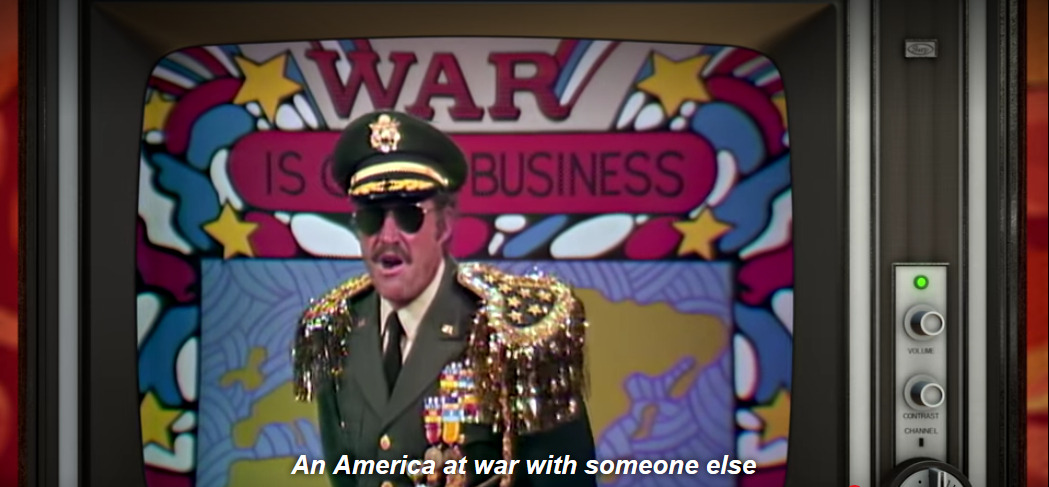

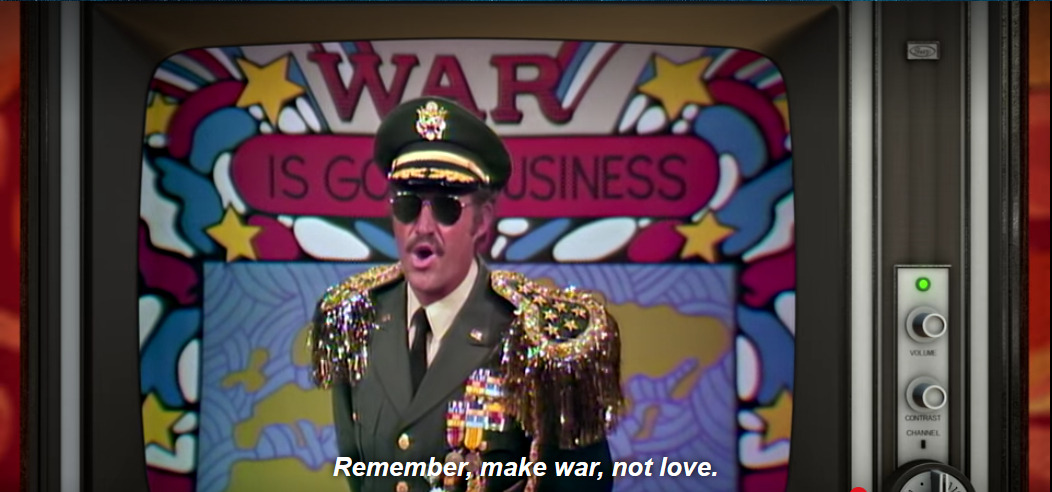
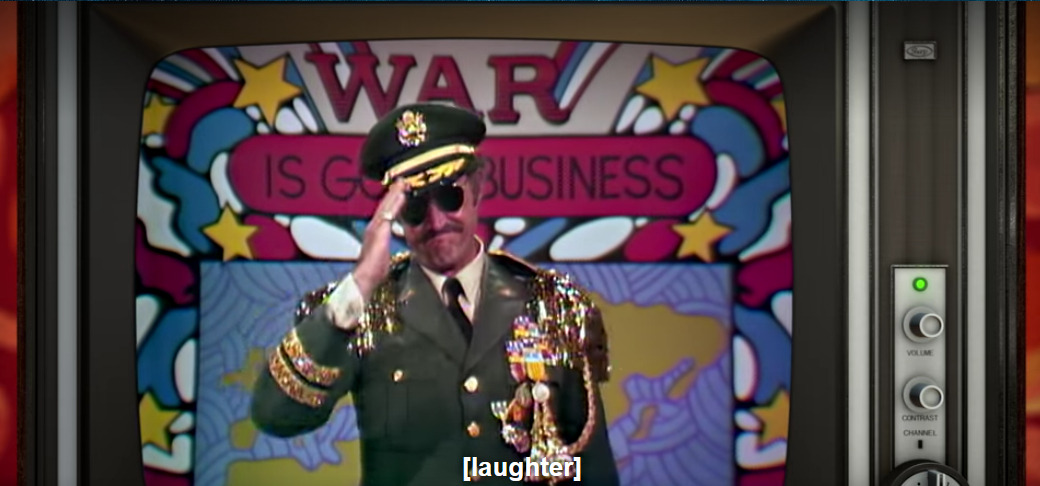

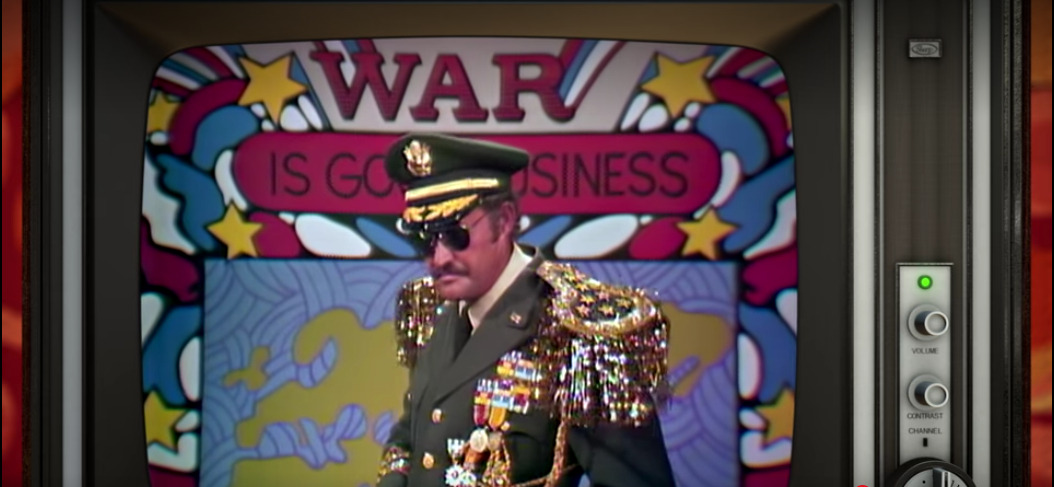

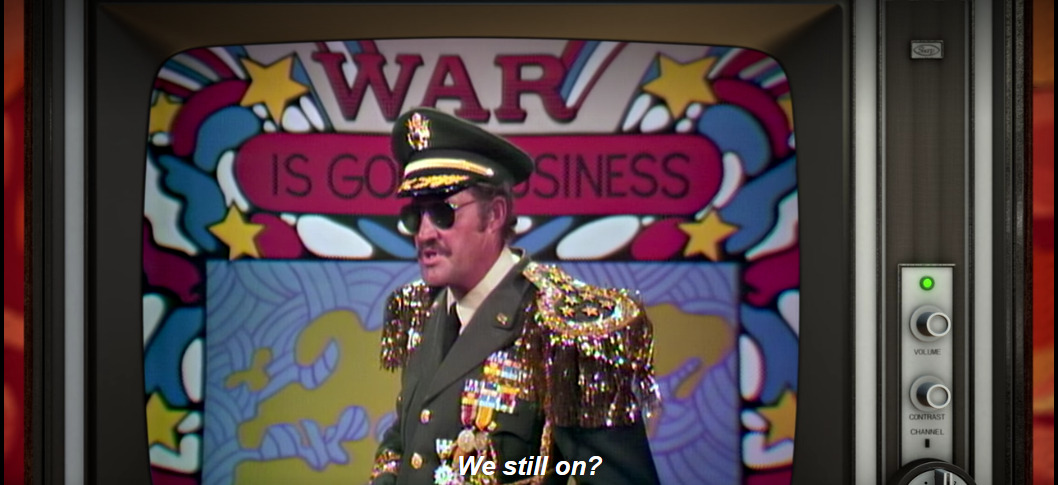
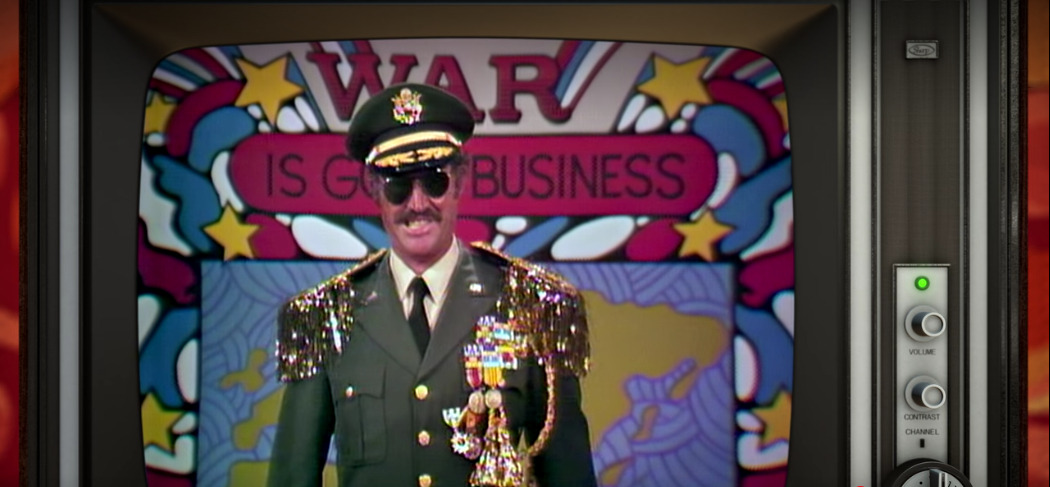
Rowan & Martin's Laugh-In S03E02 (Oct 20, 1969)

Wire have been one of my favorite bands since around 1980, and their latest album, Change Becomes Us, has been earning heavy spins on household and car stereos hereabouts since its issue last month. It’s one of their finest discs ever, hands down. For longtime Wire fans, this one has been a particular treat, since it returns to song sketches crafted in the aftermath of their 1979 masterpiece, 154, but only issued in fragmentary or raw form on the live Document and Eyewitness, released when the quartet dissolved for the first time as the ’80s dawned.
With a new Wire album out, I loaded up a bunch of their older tracks — including their remarkable 154-era single “Map Ref. 41° N 93° W” — onto the car iPod when Marcia and I drove down to Asheville, North Carolina last month to visit family. “Map Ref” came on somewhere in Tennessee, and Marcia looked at the title on the dashboard display and asked “Is that a real place, and have you looked to see where it is?” As a hardcore map geek, and a 30+ year Wire fan, I was embarrassed to admit that I had not, so I asked her to use her Smart Phone to look it up and see where it was.
Imagine our surprise when Marcia discovered that the point described by those latitude and longitude coordinates was about 100 miles from our home in Des Moines, down near Centerville, Iowa! When we got back here after our holiday, I did a little research and discovered why lyricist Graham Lewis had picked that point: here’s the story.
For those who know me or have been reading my writing for more than the past ten minutes, it should come as no surprise that I immediately resolved to visit this location, since that’s how I roll. A little Google Earth research showed me that it’s actually a bit to the northwest of Centerville, on the opposite side of Lake Rathbun, where Marcia and I had vacationed for a weekend last summer. ...

Though Saturn is not the only ringed planet, it boasts the most spectacular circlets of ice and rock in our solar system. On August 26–27, 2023, you’ll have a better view of them than usual when Saturn reaches opposition. Here’s what you need to know about the annual event.
Opposition describes a planet’s position in relation to the sun and Earth. When Saturn aligns with these two bodies, with Earth in the middle and Saturn on the outer edge, it reaches opposition. From our vantage point, we can watch the sun’s light fully illuminate Saturn’s surface. The second-largest planet will also appear on the opposite side of the night sky: as the sun sets in the west, Saturn will be visible in the east.
Jupiter, Saturn, Uranus, and Neptune—the solar system’s gas giants and ice giants [PDF], respectively—reach opposition roughly once per Earth year. Because Mars and Earth are closer together in their orbits, Mars reaches opposition about once every 27 months. Venus and Mercury cannot reach opposition because their orbits are always between Earth and the sun.
Saturn will rise around sunset on August 26, 2023, and slide under the horizon by dawn on August 27. It will reach opposition at 4 a.m. Eastern Daylight Time. A waxing gibbous moon may reflect some light into the night sky, but it won’t wash out the show.
When searching for Saturn, look for Aquarius. The planet will appear directly in front of the water-bearer and will travel through nearby Capricorn. Though you will be able to see Saturn through a pair of binoculars, you’ll need a basic telescope to detect the rings around the planet. Refer to a sky chart if you get lost.

According to the recent Consumption Habits survey conducted by Gallup, an American analytics and advisory company, half of Americans have tried cannabis at some point in their lives, a behavior that has been steadily rising over the past quarter century.
Although this figure is nearly unchanged from the 49 and 48 percent ones from 2021 and 2022, it is statistically higher than the 45 percent in 2017 and 2019. Moreover, this year’s survey revealed that about one in six (17 percent) of the respondents claim to use cannabis regularly – a figure that has doubled since 2013. ...


... Born the sixth child of Mexican immigrants (hence “Sixto”), Rodriguez started writing and performing music, drawing on his working-class upbringing for inspiration and earning comparisons to the likes of Bob Dylan. He scored a record deal with Los Angeles label Sussex Records, releasing the psych-rock Cold Fact (and his signature song, the melancholy anti-drug “Sugar Man”) in 1970 and Coming from Reality in 1971, both under his last name. Both flopped, and Rodriguez quit music to work blue-collar jobs in Detroit, studying philosophy at Wayne State University, and living in the city’s Woodbridge neighborhood.
Little did he know that thanks to a deal with Australian record label Blue Goose, his albums became hits there, as well as in New Zealand, Botswana, Zimbabwe, and South Africa, where his politically charged songs resonated among anti-apartheid protesters. Rodriguez was a mystery to his fans, too, rumored to have died by suicide.
In the meantime, Rodriguez ran unsuccessfully for local office, including for City Council in 1989, for Mayor in 1981 and 1993, and for the Michigan House of Representatives in 2000.
“I ran for mayor of Detroit. I ran for city council of Detroit. I ran for state rep of Michigan. And I also ran for my life,” he told Metro Times in 2010 with a laugh, adding, “I had no choice. … The only thing worse than having too much to do is having nothing to do. So I had to work [because] nothing was happening for me in music. You do what you do to survive.”
While Rodriguez was invited to perform in Australia in 1979 and 1981, he was unaware of his fame in South Africa until his daughter Eva found a website dedicated to him, leading to a second act for his career. Cold Fact and Coming from to Reality were reissued in 2009, and Rodriguez began to perform for larger audiences. A documentary about the rediscovery of Rodriguez, titled Searching for Sugar Man, was released in 2012, earning critical acclaim.
“It’s been a crazy odyssey,” he told Metro Times in 2010. ...
He lived a few blocks up the street from us.

Rodriguez, the singer-songwriter whose unlikely career was the subject of Oscar-winning documentary Searching for Sugar Man, has died at 81.
The news was announced on his official site with his cause of death unknown. “It is with great sadness that we at Sugarman.org announce that Sixto Diaz Rodriguez has passed away earlier today,” the official statement read. “We extend our most heartfelt condolences to his daughters – Sandra, Eva and Regan – and to all his family. Rodriguez was 81 years old. May His Dear Soul Rest In Peace.”
The Michigan-born musician had struggled to sell many copies of his first two albums in the US in the 1970s and so quit to take on manual work. But his music gained popularity elsewhere in places such as Botswana, South Africa, Australia and New Zealand.
His cult popularity in Australia led to a 1979 tour of the continent while in South Africa, a compilation album went platinum as a rumour started that he had killed himself.
It wasn’t until 1997 that he discovered his fame in South Africa after his daughter found information online. He then went on tour in the country. Further fame followed when his song Sugar Man was covered by Paolo Nutini and South African band Just Jinger. The original song was also sampled by Nas.
His life became the subject of the 2012 documentary Searching for Sugar Man, which premiered at the Sundance film festival to acclaim. It won the Oscar for best documentary in the following year.
Directed by Swedish film-maker Malik Bendjelloul, it charts his life and the search for him. After its success, Rodriguez’s albums entered the US charts for the first time.
“It’s been a great odyssey,” Rodriguez said in a 2008 interview with the Detroit News. “All those years, you know, I always considered myself a musician. But, reality happened.”


Legendary Detroit folksinger Sixto Rodriguez has died at the age of 81, the Sugarman.org website announced on Wednesday.
Rodriguez was the inspiration behind the Academy Award-winning documentary "Searching for Sugar Man" in 2012, which followed two South African men who attempted to find out whether rumors of Rodriguez's death were true.
He was born in Detroit and released several albums over the years, most of which were flops in the states, but were blockbusters overseas. Until the 2010s, he never knew how successful they were.
In South Africa, he'd been bigger than Elvis.
The film reveals the Wayne State grad largely worked as a laborer for all those years while living a modest life in Detroit.
He channeled his political spirit by running for council, Detroit mayor, and even state representative.
"I describe myself as a 'musical political' and that I am urban as opposed to rural,” explained Rodriguez.
He could relate to the working poor, and the injustices of the day. That struck a chord with the anti-Apartheid movement in South Africa.
His rock-n-roll out-shone the Rolling Stones there.
When Rodriguez found out some 20 years later about his superstar status, it was a magical reunion for both the artist and his fans. He sold out a string of South African concerts in the 90s.
So what did he think about the documentary?
"I didn't want to be in it really. I thought that it was, well, my personal private life and everything. So I wasn't sure what [the director] wanted to do, but at the end, he convinced me,” says Rodriguez. “And it has certainly excited my music career."

Nighttime view of Detroit waterfront, skyline and Detroit River. Ferry and steamship travel on river in foreground. Printed on front: "639, water front by illumination, Detroit, Mich." Printed on back: "Metrocraft, Everett, Mass." Handwritten on back: "Aug. 3, 1941. Fine trip but not much time to write or even wire. Will tell you all about it when we get home. In Canada for 2 days - no tourists from there - both are well. Ada & [undecipherable]." Card is postmarked August 3, 1941.
Burton Historical Collection, Detroit Public Library